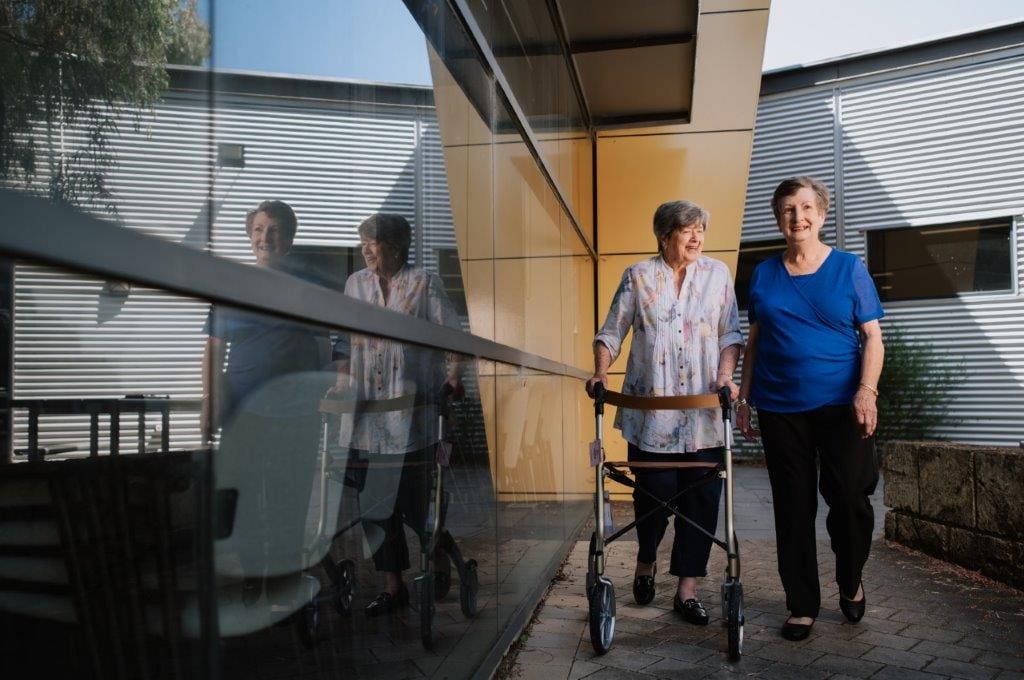Reablement approach -A cultural change
Having a Wellness and Reablement approach means that staff at every level within an organisation view success through the lens of the consumer who has been assisted to gain or regain skills and confidence to achieve their goals.
Scroll down for more information.


A culture of Reablement
The aged care sector is experiencing constant change in policy and reforms, which requires service providers to be flexible.
For a reablement approach to become embedded within an organisation’s culture, it takes determination and a belief across all parts of the business. A belief that every person has a right to fulfil their physical, mental and spiritual potential, no matter where they are in life’s journey. Therefore, staff at every level should view success through the lens of a consumer who has been assisted in gaining or regaining a skill or confidence to achieve their goals.
This vision and organisational achievement can propose many challenges for providers. Hence, changes may be adopted in stages, with coaching and training. This includes members of the board, support worker, volunteers and more. It encompasses a service delivery model that focuses on client outcomes as outputs and not just hours of service.


Practices that enable a wellness and reablement approach
Whilst only a selection, the following are practices that have been shown to support a wellness and reablement approach.
- An understanding of the ageing journey and why these preventative approaches are important
- Goal orientated support plans that focus on what the client can do rather that what they can’t do
- A philosophy of “doing with” and not taking over
- Well focused care plans
- Access to equipment and assistive technology
- Access to allied health (when needed)
- Using strength based/enabling language
- Communication and continuity of support with clients
- Appropriate policies and guidelines
- A service delivery model that supports short term support
- Regular debriefs, discussions & meetings for staff
- Staff training opportunities
- Being flexible and responsive to client needs
- A focus on outcomes
- Appropriate policies and guidelines
Identified challenges/ barriers in applying a wellness approach
The following are some of the challenges/barriers that organisations need to be aware of as identified by staff in providing a wellness and/or reablement approach.
- Client understanding of value of reablement
- Client motivation
- Difficulty explaining reablement to clients (lack of written materials to leave with clients)
- Lack of communication with family
- Rostering issues
- Not enough time (funding/resources)
- Insufficient training
- Lack of continuity of staff
- No clear policies or direction
- A lack of communication about the clients support plan, goals and intended outcomes
- Not being listened to about client’s needs
- Insufficient time to conduct review of support




Drivers for wellness and reablement
There are many drivers supporting the development and delivery of wellness and reablement approaches in the aged and community care sector. Some of these are detailed below.
- The desire to create more person-centred approaches in which older people are seen as full citizens with the same human rights as others
- Changing consumer preferences and expectations
- Stronger focus on outcomes
- Long term benefits for older people such as an improved sense of purpose, autonomy and self worth, improved physical and emotional health and well being, increased participation and connection with community
- Greater staff job satisfaction
- Recognition that health and social care services too often fail to intervene early enough to prevent a loss of independence
- Recognition that health and social care services can sometimes make overly rapid decisions about older people’s long term destinations
- Better utilisation of resources
- Providing short term reablement means more people can be supported by the aged care system
- An aspiration from budget holders to make best use of scarce resources to get the best outcomes from existing funding
What wellness and reablement looks like at each level of the organisation
Embedding a wellness and reablement approach may require significant organisational cultural and behavioural change. Staff at all levels need to have a clear understanding of what the approach is and be committed to its implementation.
- It is important to gain commitment and understanding from the Board and/or Management Committee to support the implementation of the approach, including resources that may be required.
- Ensure organisational documentation is written with strength-based language and processes which support wellness and reablement. This should help bring the approach to the forefront for staff who are interacting with client and families or when strategic planning and decisions are being made.
- Identify any change management challenges and develop strategies. Seek support to address the challenges, i.e. education and training regarding the why and how of wellness and reablement.
- Review recruitment documentation and position descriptions to ensure they reflect the values, roles and capabilities required to work from a wellness and reablement approach.
- Set outcome measure both on an individual basis (clients) and organisational basis, instigate tools to measure outcomes
- Ensure all marketing material describes and explains the wellness and reablement approach
- Engage with external stakeholders to seek advice and support to assist with implementation of the wellness and reablement approach i.e. RAS, Allied Health and Assistive Technology organisations.
A Wellness Approach: Shifting Cultures from Outputs to Outcomes
CHSP has historically reported outputs as in the number of sessions delivered against funded targets. This style of reporting is service provider centric and focuses on tangible evidence that a service has (or hasn’t) been delivered.
In 2017 Julie Morrow, Manager Healthy Ageing at Brisbane North PHN talked about shifting cultures from outputs to outcomes. In her presentation she covered many of the points mentioned above and also discussed how outcome measurements focus on how things turn out, or consequences of something. This style of reporting can be quantitative and qualitative (client’s perspective). It seeks to answer the question: ‘What has been the impact of our service?’ Typically, you would have a well-defined goal, a baseline measurement and a re-measurement at an agreed time to establish gain/loss.


